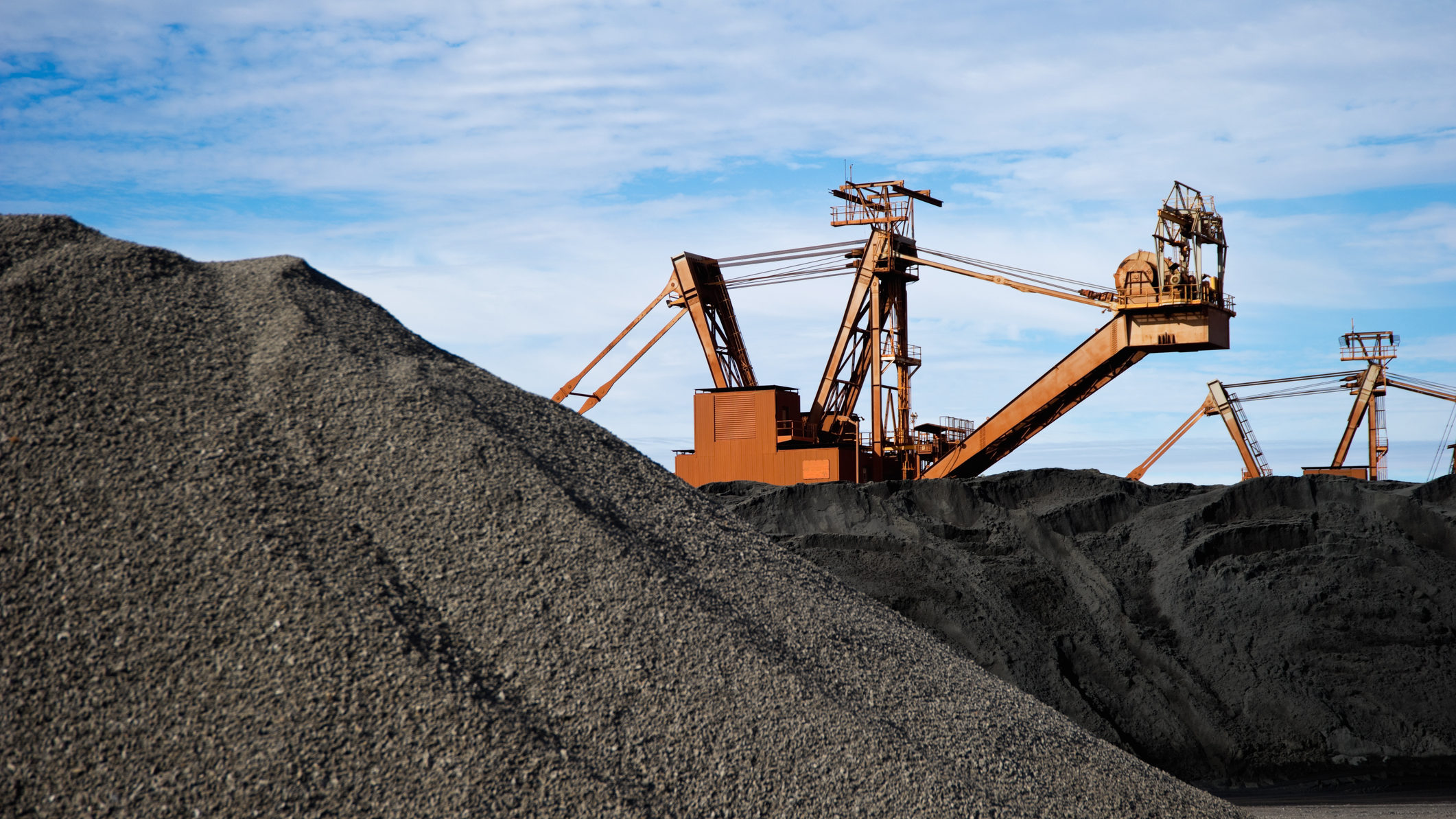Q&A: ‘Mr Manganese’ Peter Allen talks Firebird Metals and the robust market for the steelmaking commodity

Pic: CUHRIG/E+ via Getty Images
- Firebird Metals shares enjoyed a lift yesterday after a positive scoping study on its Oakover manganese project
- Study places NPV of $329m and pre-tax IRR of 47% on Pilbara project
- Firebird boss and “Mr Manganese” Peter Allen says manganese has bright future in steel and battery technology
Manganese junior Firebird Metals (ASX:FRB) was running hot last year, soaring to a high of 68 cents just two months after its demerger from the old Firefly Resources in September.
It has since come off the boil as speculative investments have faltered, with $11 million capped FRB falling 64.66% over the past year and 50% year to date.
That poor run was halted yesterday as the company rose more than 5% (and higher in morning trade) on the release of a scoping study for its flagship Oakover deposit in the Pilbara.
It is one of a handful of new projects which could be used to fill emerging gaps in the supply of manganese, initially in the global steel sector where manganese alloys are irreplaceable and then in batteries, where manganese is one of the components of the nickel-cobalt-manganese cathode used in long range Tesla EVs.
That scoping study shone a positive light on Oakover’s potential.
Oakover would boast a capex of around $143.8m, $73.4m for its processing plant and $70.4m on infrastructure including renewable power.
But it would have an NPV of $329m and strong pre-tax IRR of 47% at prices of US$5.27/dmtu for 30% manganese concentrate.
It would produce about 900,000t of that stuff over a ten year mine life with a three year payback, generating $72.7m in EBITDA a year, a figure that would rise to $125m on the booming manganese prices seen in March and April.
Looking further ahead, Firebird wants to extend Oakover’s remit to produce high purity manganese sulphate for the growing battery market.
Stockhead caught up with “Mr Manganese” Peter Allen on Firebird’s outlook and why he thinks the manganese market is a good place to be.
Can you remind me, why do they call you Mr Manganese?
Because for one reason or another, I’ve been involved in manganese for almost 21-22 years, I guess.
I started my career working for Consolidated Minerals back in 2000, worked for them 14 years and then I’ve been involved with a lot of other manganese companies over the years. I was a consultant to Element 25 a few years back and I’ve just generally been involved in a lot of different manganese projects.
I’m not sure if it’s good strategy, or just good luck.
And with all that experience in the manganese industry have you seen the level of interest in manganese as a commodity previously that we’re seeing right now in terms of the broader mainstream recognition of what it is and what it does?
Definitely interest in manganese is on the increase principally on the back of lithium ion batteries and battery raw materials.
Manganese is becoming a key ingredient within those battery raw materials, and a number of OEMs, car manufacturers and battery cathode manufacturers are looking at how they can increase manganese content to the benefit of the battery.
So that is really driving interest, it’s probably one of the strongest times I’ve seen in interest in manganese over my career.
High purity manganese sulphate production is something that you’re exploring at Oakover. But the initial focus of the scoping study is on the concentrate path, which is more for the steel industry at the moment.
That’s absolutely correct and the logic being that the early parts of the process in terms of high purity manganese sulphate would be exactly what we need to do to produce the concentrate.
[We will be] crushing, screening, and upgrading it as best we can before we put it through a leaching process. So that’s why it kind of makes sense and it then diversifies our approach.
We’ll have a foot in a really long term stable market in steel, and then a foot in the real growth market of batteries.
So the scoping study is out. The reaction for it has been fairly positive and you have a (pre-tax) IRR of 47%. What do you think are the big highlights out of the scoping study?
You know, I think it really demonstrates the potential of Oakover. We believed in Oakover over the last 12 months as we’ve been developing, going through the exploration, drilling and test work – and it demonstrates our ability that we will be able to use that two pronged strategy of A) producing steel and B) looking to take that down into high purity sulphate we can really create significant manganese hub at Oakover.
In terms of pricing we’ve seen the higher prices for the pretty constrained 44% material recently. In terms of the lower grade material what do you see as the prospect for that market going forward?
The prospect is really strong. Traditionally, lower grade materials were produced domestically in China. Through a number of different mechanisms like stricter environmental controls, stricter occupational health and safety measures.
And the fact that the Chinese government really encouraged the manganese alloy industry in China to move away from where the ore production is. Ore production is in the south, Guangxi, Hunan, Guoyang area.
About 10 years ago, the Chinese government encouraged all the manganese smetlers to move to the north, up to Inner Mongolia. And so that’s really created a disconnect for their own internal supply chain.
So what historically they would have got in terms of lower grade ores from the domestic market now they import, and this sector of the market has only been growing ever since that occurred and there is really strong demand.
There’s obviously South Africa as a large producer, they produce a lot of this grade and Malaysia also supply this grade. So we’re really looking to tie into the bulk manganese alloy being silicone-manganese market. Our product is really well suited for that production.
On the silicomanganese market, I spoke to Adrian Low from OM Holdings a couple weeks ago, he’s a little bit concerned about the prospect of a recession, and they’re sort of monitoring what that will do for the business. Where do you think your company stands up as an investment case, with markets doing what they are at the moment?
I think what stacks up is it’s a significantly large resource. We grew it from 64 million tonnes to 172 million tonnes through the last drilling campaign, we’ve added 57 million tonnes from Hill 616, which is just a little bit to the south of Oakover.
So we’ve got a really large significant resource. It is near surface, very flat, gently dipping simple geology, hence it will have low mining costs. On the concentrate side, we’ll have simple processing, we’re looking at a combination of ore sorting and then … gravity separation. So on that side of the coin it’s low mining (costs) and simple processing.
Yes, there are some concerns on the market of the future, at the moment with what’s going on in the world. But I think long term steel still has extremely strong fundamentals.
So I think that’s the real underlying investment case is, size of resource, longevity of project, the fact that we’ll then be able to add value through the high purity manganese sulphate and do then the initial simple processing of the concentrate.
You mentioned that one of the big capex items in scoping study is for renewable power plant. What is it that you’re actually looking at for a renewable power plant, and how much of the energy needs does it cater for and what’s the significance of rolling with renewable power at such an early stage in the planning process for the mine?
We’re big believers in all the typical ESG principles, environment and sustainability. And once we started looking at the style of the plant, (and) the potential diesel consumption of the plant, it became more obvious that renewables was a definite option and things should follow.
We’re looking at a combination of a wind-solar plant, we’re looking to have 100% renewable penetration for our processing plant. At our processing plant we’ll use about five to six megawatts, so not huge amount – and the associated Capex for that wind-solar plant really would pay for itself within less than three years.
So for a long term prospect, we thought it made absolute sense to look at renewables. I think it will also then add another tick to our box, because I don’t know a lot of other manganese producers in the world that would be using renewable power to run their processing plants and even in steel today, people are looking at more and more ways to produce a greener steel.
I think it will put us in good stead in the future if we can produce an ore or concentrate with a lower CO2 footprint because we’re using renewable power for our processing plant, then we’re going to look at how we can potentially expand that in the future as we go down through the high purity manganese processing study as well.
Firebird Metals (ASX:FRB) share price today:
Related Topics
UNLOCK INSIGHTS
Discover the untold stories of emerging ASX stocks.
Daily news and expert analysis, it's free to subscribe.
By proceeding, you confirm you understand that we handle personal information in accordance with our Privacy Policy.








